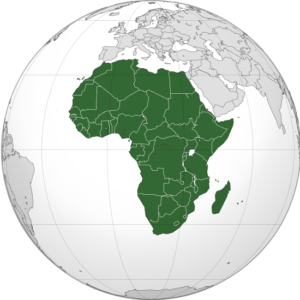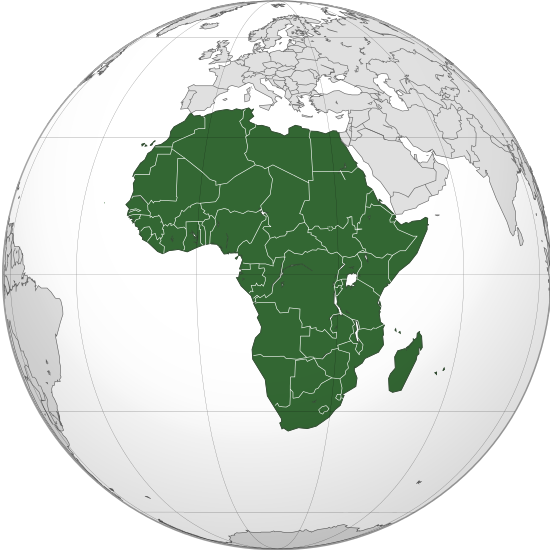 Sub Saharan Africa is urbanizing faster than any other region. These are the 30 SSA cities that are driving the continent’s growth.
Sub Saharan Africa is urbanizing faster than any other region. These are the 30 SSA cities that are driving the continent’s growth.
Like the rest of the developing world, Africa’s urban population is growing at a furious pace. Within the next two decades, the continent’s urban population will double as new economic centres emerge and attract rising tide of Africans moving to these areas for jobs and a better life.
“At 3.9%per year, urban population growth rates in Africa have been and will continue to be the highest in the world,” said World Bank.
At the moment, around 320 million Africans live in urban areas (a little over a third of the African population), more than twice as many as in 1990. By 2030, Africa’s urban population is forecast to rise to almost 50% of the population, or some 654 million people.
The rapid urbanization will make huge demands for water needs in the fast-growing cities, which would unlock the economic potential of Africa’s cities and improving the lives of city residents, says Alexander Bakalian, World Bank Sector Manager for Urban Development and Services in the Africa Region.
“We need to understand how water is linked across sectors and innovate in the way we do project planning and implementation. It is noteworthy that some cities in Africa have started to consider integrated planning of water resources as part of their city development strategies.”
Here are how Africa’s Top 10 Cities fared:
1 ABUJA, NIGERIA: 8.93%
Nigeria’s capital city is clocking population growth of nearly 9%. To meet the city’s rising needs, foreign and domestic investors have pledged to invest nearly USD2-billion in 10 new districts of Abuja being built by the Federal Capital Territory Administration (FCTA).
The investors will focus on housing, roads, water and electricity, boosting the country’s non-oil growth.
“Non-oil GDP growth is projected to moderate to 7.8% in 2012, reflecting the tighter monetary and fiscal policies and a softer global economy, while overall GDP growth would rise slightly to 6.9% on the basis of a moderate rebound in oil output,” says the International Monetary Fund.
2 Ouagadougou, Burkina Faso: 7.02%
The capital of Burkina Faso is recovering from the floods in 2009 which left thousands of people homeless and millions in infrastructure damage.
The African Development Bank (AfDB) is committing to fund a sanitation project up to €26 million to commence work in 2013, with €8 million being committed by the Government of Burkina Faso, and the €1.5 million invested by the Municipality of Ouagadougou.
According to the AfDB, the city is “seeking to fill the €103 million gap with other financial partners, most of whom expressed interest in the project during the roundtable stage.”
The IMF expects Burkina Faso’s GDP to rise 8% this year, on the back of a strong agricultural season.
“Inflation was higher in the first half of 2012 due to a shortage in food supplies and higher fuel prices, but decreased over the summer and is expected to drop further with the new harvest, to around 2 percent year-on-year. External balances have deteriorated in 2012 as a result of higher food and fuel prices and more imports of food.”
3 Luanda, Angola: 5.87%
Angola’s capital and its largest city, Luanda made headlines when human resources consultancy Mercer ranked the city as the most expensive for expatriates last year.
Fuelled by oil production, Angola is now Africa’s third largest economy and second largest oil exporter after Nigeria. And Luanda is at the centre of Angola’s growth, as it accounts for three quarters of the country’s GDP, and a quarter of the country’s population.
The country has launched an Angola 2025 programme, and Luanda is set to benefit from expansion of the physical and regulatory infrastructure.
“Limited access to roads, power, and water weigh heavily on the cost of doing business in Angola,” says the IMF. “Efforts underway to modernize the operations of the Port of Luanda, repair and extend the road and railway network, and increase investment in power generation and water distribution will strengthen the basis for sustainable medium-term growth.”
4 Yaoundé, Cameroon: 5.45%
The capital of Cameroon, Yaoundé is reflecting the country’s crude revenues windfall and rising economic expansion, even though the country still does not have impressive social indicators.
The IMF expects non-oil growth to be supported by ongoing efforts to boost agricultural productivity and competitiveness; major public investment projects; and measures to improve the business environment.
“The oil sector is expected to boost real GDP growth in 2012-17, with projections of the National Oil Company (SNH) pointing to a sizeable increase in production. The increase reflects the coming on-stream of ongoing investments, following successful exploration efforts.”
5 Kumasi, Ghana: 5.04%
Ghana is seen as a model of democracy in Africa, and is in the midst of an election which concluded on Friday without a clear winner.
Such stability has helped its capital Kumasi (or Comassie) to emerge as the fifth fastest growing city in Africa, according to the World Bank.
The IMF expects the country’s GDP to rise 8.5%, after a robust 13.6% growth last year, with both oil and non-oil sectors posting impressive growth.
“Helped by high gold prices and anticipated inflows from cocoa exports, the current account deficit is projected to remain broadly unchanged at about 9% of GDP, with official reserves recovering gradually to their end-2011 level.”
– Doing business in Africa



Comment here
You must be logged in to post a comment.